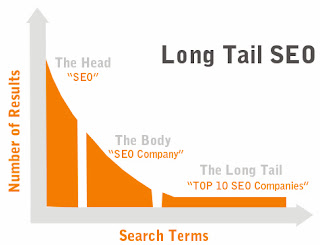The old trend of long tail SEO is no longer a popular strategy. This earlier technique that focused mainly on traffic had little, if no consideration of user experience. The steps followed were: searching for as many long-tail keywords as possible, generating a landing page for each one of them, placing keywords in title and header tag, writing content stuffed with keywords and focusing only on conversions. For example, preparing a list covering every possible long-tail keyword related to a search phrase 'SEO company' such as 'Best SEO companies', 'Great SEO companies', 'Top 10 SEO' companies and more and using them here and there in your content is an outdated strategy for long tail SEO, though many are still following this.
The focus in 2013 and beyond is primarily on authoritative information. The simple reason is that search engines, particularly Google, now offer users sites that provide authoritative information rather than the sites that facilitate only easy conversion and with practically no informative value.
If you have a growing business, and want to optimize your content for long tail keywords, then here are some innovative strategies you could follow.
Getting the Most Out of Your Team
The first step would be to call your team together and talk about the pages or content that you want to create. Discuss various aspects of the content based on your experience and get suggestions from your team. Your in-house team will have excellent domain expertise and can easily come up with the right and most effective ideas.
For example, if your business targets local market, then you should make your content attractive to local customers. You can discuss with your team about the latest trends in local search, how to implement them in your content and other related things.
Understand Your User Requirements
Once you have formed a clear idea about the content requirements, find out the actual needs of users. Think about what users expect to find when arriving at your page or content. You can interview past users, conduct a poll for prospective customers or do online research to get the desired information. While mapping out content that addresses more number of users, you can find out which long-tail keywords will work best for you. For example, if you own a juice business, you can find out the products that are most popular among users by means of interviews and polls. If most of them prefer grapes juice, you can make use of the long-tail keyword 'best grapes juice company'.
You should not only search for what people expect from your product or service, but also check for the things that people want and you do not offer. Based on this information, you can create a more comprehensive solutions guide for users rather than highlight only those you offer directly. This will help to find out long-tail keywords that may not relate to your business.
Conduct Competitive Research
Checking the strategies of competitor sites will help you to set up a baseline, if you are new to the business. For example, if you have created a page for your jewelry business for the first time, you can search other sites to find how they have placed the content which describes the qualities of their products and used the long-tail keywords. However, it is not a good strategy to copy their approach. Use their approach as a baseline and develop your own ideas. Look at the sites of authoritative competitors. Those sites will help you for more than a baseline. By checking what they do differently, you can develop fresh, creative ideas easily.
Quantitative Research Based on Informative Value
It is a good idea to research into keyword volumes so that you can prioritize the most important ones. But, it does not mean that you should consider the volume before user experience. If a keyword is searched for around 500 times and it does not add any value to your visitor, then you can't reap any benefits by exploiting that keyword. Hence, give prime importance to the informative value of the content and then consider keyword volume.
Generate Sample Design and Get Feedback
Create sample designs and get feedbacks through different mockup services including UserTesting.com, Mechanical Turk and others. Revive the pages/content according to the feedbacks.
Check for Page Relevancy
You should check whether the page or content that you created is relevant to your website or to the Web. The page or content should be of real value if it is to be relevant. This can be checked at any stage of the page creation process.
Each of these strategies will work best only if there is a dedicated team to implement them. The best approach would be to get support from a professional search engine optimization services company that provides reliable keyword research services.

No comments:
Post a Comment